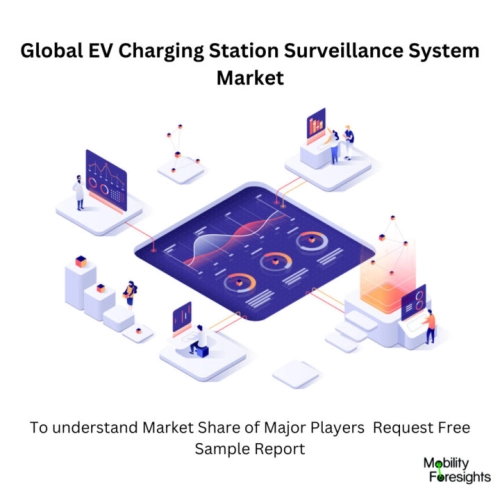
- Get in Touch with Us

Last Updated: Apr 25, 2025 | Study Period: 2024-2030
Charge point operators face a sizable difficulty in balancing the current or anticipated power consumption for charging on a single charging station or a group of charging stations with the auxiliary electrical grid.
As a result, the strain on the electricity and EV charging infrastructure will increase as the number of charging stations increases. A good EV charging management system will keep track of how each vehicle is charging. Additionally, it will keep an eye on the capacity of the electrical infrastructure, load balancing, and local energy usage in real time.
The deployment of EV charging management software provides data sharing, convenient and uniform management, and monitoring of power distribution equipment.
It is capable of realizing the site's total power, total current, total power, power factor, main transformer, switch status, reactive power compensation, and monitoring and controlling harmonic control equipment.
The CPO can also use special third-party products designed for this if they require some of the more sophisticated load balancing functions. The EV Charge solution supports REST APIs, enabling smooth integration of third-party goods.

The Global EV charging station surveillance system market accounted for $XX Billion in 2023 and is anticipated to reach $XX Billion by 2030, registering a CAGR of XX% from 2024 to 2030.
The EV Series Charging Stations surveillance system launched by Leviton, a pioneer in wireless smart home technology and residential electric vehicle supply equipment, are on sale in Q1 and are compatible with the My Leviton app.
The latest series offers Level 2 charging stations that can power any electric vehicle at 32, 48, and 80 Amps. Users may take control of their entire home, including EV chargers, lighting, and load centers, with a single app by simply integrating these devices into the My Leviton network.
Customers can check the charging station's status from a distance using the My Leviton App, including when it is ready to charge, when a charging session is happening, and when it has finished. To ensure better performance, users can also be alerted if an issue arises during a charging session.
| Sl no | Topic |
| 1 | Market Segmentation |
| 2 | Scope of the report |
| 3 | Abbreviations |
| 4 | Research Methodology |
| 5 | Executive Summary |
| 6 | Introduction |
| 7 | Insights from Industry stakeholders |
| 8 | Cost breakdown of Product by sub-components and average profit margin |
| 9 | Disruptive innovation in the Industry |
| 10 | Technology trends in the Industry |
| 11 | Consumer trends in the industry |
| 12 | Recent Production Milestones |
| 13 | Component Manufacturing in US, EU and China |
| 14 | COVID-19 impact on overall market |
| 15 | COVID-19 impact on Production of components |
| 16 | COVID-19 impact on Point of sale |
| 17 | Market Segmentation, Dynamics and Forecast by Geography, 2024-2030 |
| 18 | Market Segmentation, Dynamics and Forecast by Product Type, 2024-2030 |
| 19 | Market Segmentation, Dynamics and Forecast by Application, 2024-2030 |
| 20 | Market Segmentation, Dynamics and Forecast by End use, 2024-2030 |
| 21 | Product installation rate by OEM, 2023 |
| 22 | Incline/Decline in Average B-2-B selling price in past 5 years |
| 23 | Competition from substitute products |
| 24 | Gross margin and average profitability of suppliers |
| 25 | New product development in past 12 months |
| 26 | M&A in past 12 months |
| 27 | Growth strategy of leading players |
| 28 | Market share of vendors, 2023 |
| 29 | Company Profiles |
| 30 | Unmet needs and opportunity for new suppliers |
| 31 | Conclusion |
| 32 | Appendix |